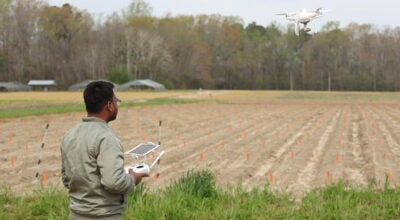Gordon addresses issues with distance learning programs
Published 9:55 pm Monday, May 18, 2020
|
Getting your Trinity Audio player ready...
|
Suffolk Public Schools Superintendent Dr. John B. Gordon III said that while some have found issues with the Virtual SPS online learning program for secondary students and distance learning for elementary students, it has done what it was intended to do — allow students to master previously learned material.
“We have received feedback on our Scholastic packets (for elementary students) and the cross-grade level material; they may not be challenging for all of our students,” Gordon told the School Board at its May 14 virtual meeting. “We understand those concerns, and have encouraged families to explore additional resources that can be found on our Continuity of Learning website.”
He said the school administrative team did not feel comfortable introducing new material to elementary students, especially with them not being a part of the Virtual SPS initiative.
Gordon said the division also got feedback on passing scores and assignment schedules in the Edgenuity platform for secondary students.
He said Dr. Maria Lawson-Davenport, advanced instruction specialist, and Dr. LaToya Harrison, assistant superintendent of teaching and learning, have helped to revise assignment schedules and provided added clarity on the passing grade of 63 percent for the fourth nine-week grading period.
“Providing instruction to our students at a cost of a little over $77,000 for our Scholastic packets, and only $8,000 for additional licenses for Edgenuity, shows the effective and efficient manner in which our Continuity of Learning plan was developed,” Gordon said.
He said a survey that will go out between June 8-12 would provide additional feedback on the Continuity of Learning plan. Gordon said it would be a three- to five-question survey to determine what tweaks can be made to make the process better.
In response to a question from board member Sherri Story asking if teachers would be included in the evaluation of the plan, Gordon said the survey would go out to everyone, including teachers.
“We want to know on our Virtual SPS experience, and even our Mastery SPS model, the feedback that we’re going to get from this survey is what we’re going to try to address,” Gordon said, “in case we have to be under these same circumstances when we start school in the fall.”
She said Edgenuity had some wrong answer issues, but that parents were generally very happy with the teachers using Google Classroom and asked Gordon to consider allowing teachers to use Google Classroom, or a blended model that allows its use with other programs.
He said the rollout of Edgenuity has been successful, but acknowledged the issues.
“I don’t want to minimize the bad points, but I need to make sure everyone understands that this was not there to replace the traditional classroom experience,” Gordon said in a separate interview, “and that’s the part I think some of our constituents and even some of our students are still grasping.”
Gordon said each class in Edgenuity should be 20 to 25 hours total from the time it started April 20 until the end of school June 5.
He said the pass grade of 63 was going to be the incentive for students.
“What we’ve discovered is kids work at different paces, especially if they’re having this new experience of being self-directed learners,” Gordon said. “That’s new for them. And then, we also had to be able to balance, for our non-core classes, the additional work that was being submitted by our teachers, and that was increasing the overall daily workload.”
He said that was part of the adjustments the division was making to smooth the process, acknowledging negative social media posts. However, he said the feedback he has received personally has been more positive.
He said students may not get an A on every test in Edgenuity, and they don’t get a retake of it, but he wants them to understand that as long as they have that 63 average, they’ll get an A in the course.
“People still haven’t fully grasped that, so we’ve had to kind of clarify some things … and make sure they understood that,” Gordon said.
He said about 10 percent of secondary students had not logged into their learning portal through May 8, and said they may have to attend summer school. He is concerned about an instructional slide going into the fall, whatever school looks like at that point.
“It’s had its challenges,” Gordon said of the distance learning program. “It definitely hasn’t been perfect, but overall, it’s been positive. I am getting more positive feedback than negative.
“We’re just going to try to make sure that we address some of the issues with the overall average workload with the kids and just making sure that we have the supports there for our special education students.”






